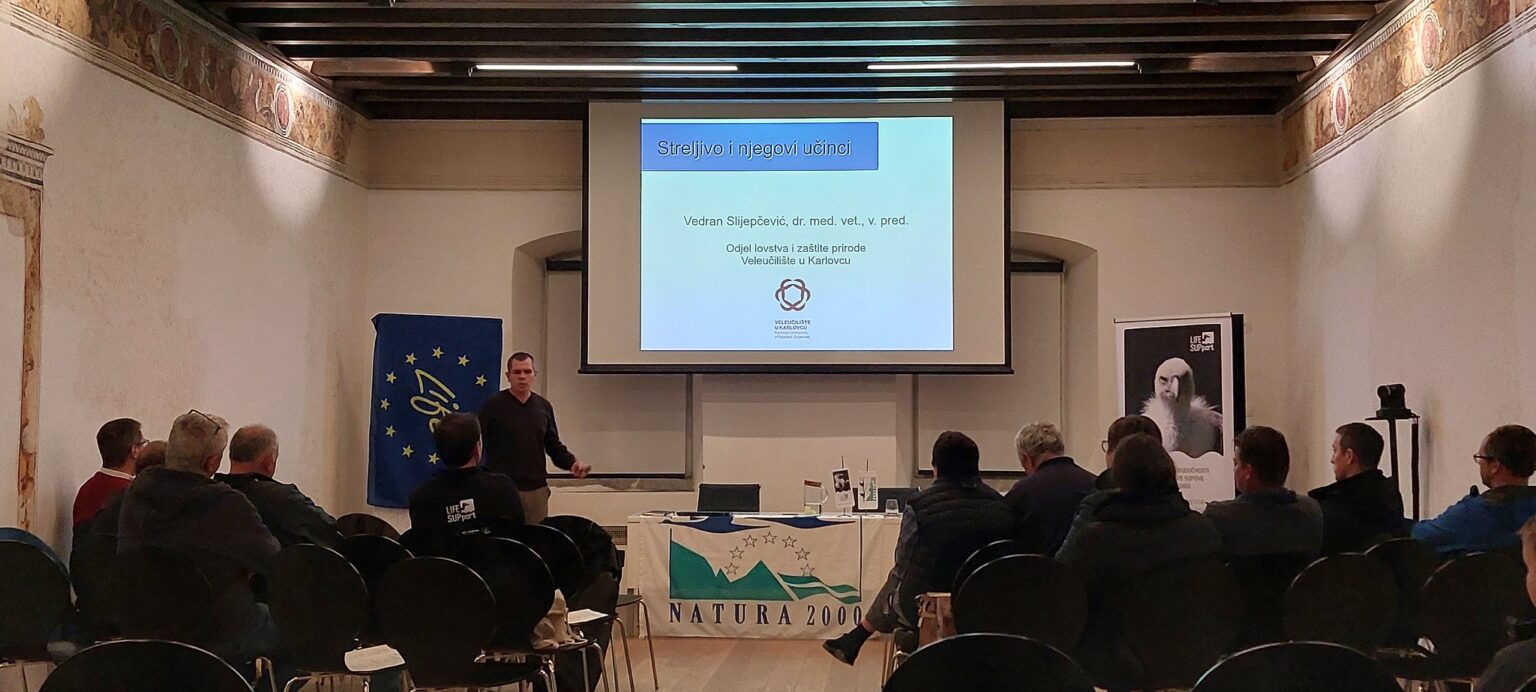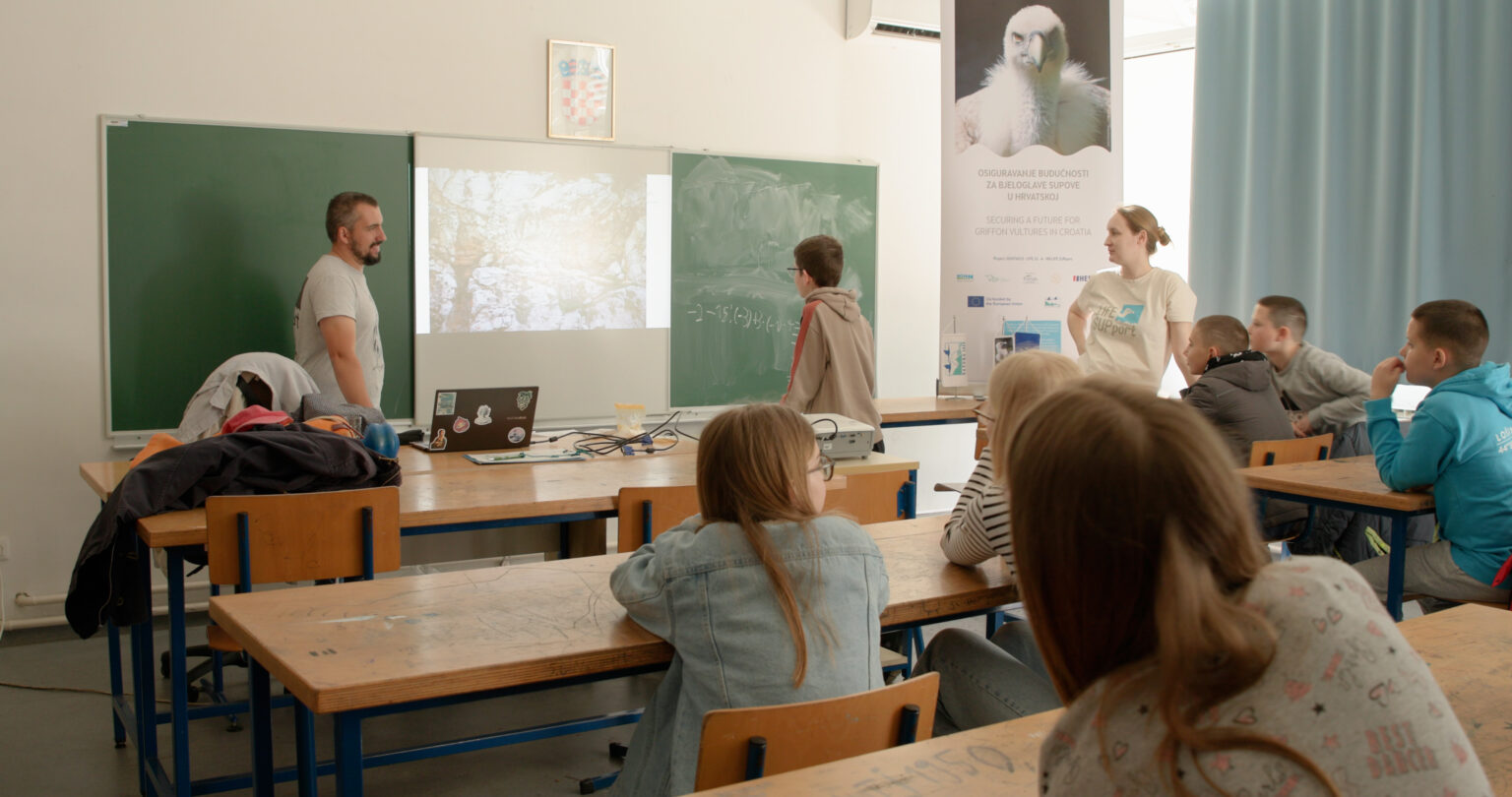
Populations of vultures drastically decreased in the Balkans over the course of the 20th Century. The LIFE Re-Vultures aims to support the recovery and expansion of the region’s only cinereous vulture colony and Bulgaria’s last population of Griffon vultures in the Rhodope Mountains that border Greece and Bulgaria. Griffon vultures With their characteristic long slender necks Griffon vultures can reach far into the carcasses of animals, to feed on the softer tissues such as muscles and viscera. These majestic birds are the most social of Europe’s four vulture species and feed in groups and roost and breed in large colonies. Griffon vultures in Europe Following a decline in the 20th century as a result of wildlife poisoning, hunting and decreasing of food supplies, in recent year the species has increased dramatically in some areas, particularly in Spain, France and Portugal with the population in western Europe now numbering around 30,000 breeding pairs.

Griffon vultures in the Balkans Whilst larger than the other vulture population in the Balkans, the number of Griffon vultures in the Balkans is just small fraction of the population of the species in western Europe. Today there are around 600 breeding pairs across the region, scattered in relatively small breeding colonies. While generally in the Balkans the species is slowly increasing, in some countries it is still declining – in mainland Greece for example there are only around 20-30 pairs despite numbering around 400 breeding pairs just 30 years ago. In Bulgaria the population declined through most of the 20th Century and was thought to be extinct in the country in the 1960s until the discovery in 1978 of 28 birds and one breeding pair in the Rhodope mountains. Significant conservation efforts by the Bulgarian Society for the Protection of Birds since 1989 led to the slow increase of this population, that now numbers around 80 breeding pairs .

LIFE Re-Vultures Launched in 2016 the LIFE Re-Vultures project is led by Rewilding Europe in collaboration with Bulgarian Society for the Protection of Birds, Hellenic Ornithological Society, Rewilding Rhodopes Foundation and WWF Greece. Like the Vultures Back to LIFE project, the LIFE Re-Vultures builds on the work of 15 years of vulture conservation projects in the Balkans involving a wide range of wildlife conservation organisations and governmental institutions.

With funding from the European Union’s LIFE+ programme, the LIFE Re-Vultures focuses on the populations of Cinereous and Griffon vultures in the eastern Rhodope Mountains that border Greece and Bulgaria. The project is improving the status of the population of the Balkan’s only breeding population of 35 pairs of cinereous vultures and support the population of 80 pairs of Griffon vultures.
The Rhodope Mountains

The Rhodope Mountains are a unique landscape, with very high biodiversity. Cinereous vultures that breed in Greece forage in Bulgaria and Griffon vultures that breed in Bulgaria feed in Greece. The area is also used by immature and non-breeding Griffon vultures coming from elsewhere in the Balkans. The project area is the cross border landscape of Rhodope Mountains shared by Bulgaria and Greece. Following vultures The LIFE Re-Vultures team are studying the dispersal and movements of Griffon and Cinereous vultures to increase the understanding of the risks and threats that are causing the deaths of birds in the region.

Weighing between 40g and 60g, GPS transmitters are fitted on the backs of the vultures to track their movements without having any significant impact on the birds themselves. The highly efficient solar powered transmitters send their GPS position over the mobile communications network and can provide as many as 500 location-fixes per day. This data then is used to create maps of the movements of the birds. By gaining insight into the patterns of movements of the birds the team are able to understand common routes and along with other data from field observations are able to identify risks and carry out actions to prevent deaths. Releasing herbivores The LIFE Re-Vultures is also releasing herds of red and fallow deer as important food source for mammalian predators such as wolves. By improving the availability of these prey species, the team are increasing the available food for scavengers too.

Insulating electricity power lines Electrocution is a major, but often overlooked threat, when perching on medium tension electrical cables the birds often make contact with the cables, resulting in their electrocution. Working with electrcity companies the LIFE Re-Vultures team is insulating some of the most dangerous power lines helping to reduce mortality of Cinereous and Griffon vultures.

Tackling poison Despite being illegal across the Balkans, the use of poisoning by hunters and farmers to control unwanted mammalian predators and feral dogs is the biggest threat to vultures in the region and is still widespread. The LIFE Re-Vultures team is tackling this threat through the establishment of an anti-poison dog unit, comprises of a dog highly trained to detect dead animals and poisoned baits and respective handler. These are used to patrol the area to help establish poison-free areas, by controlling and removing poisoned baits before they can negatively impact local wildlife.
The team are also working with involving local communities and hunting associations in efforts to develop a network of local residents, public authorities and professionals (such as livestock breeders) who can work together to combat this hugely destructive practice.

Our work with partners not only in Bulgaria and Greece but in four other Balkan states in the Balkan Anti-Poisoning Project will help raise awareness of the impact of using poison as well as supporting law enforcement and governmental organisations to protect the region’s vultures.

Nesting sites Just like the Vultures Back to LIFE, the LIFE Re-Vultures is working to improve the nesting sites available for Cinereous vultures by creating artificial nesting sites across the Rhodope Mountains to encourage visiting birds to nest in the region.

For more information about the project follow #LIFEVultures on Twitter or Facebook and keep an eye on our website as we regularly publish news from the project.



